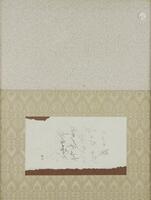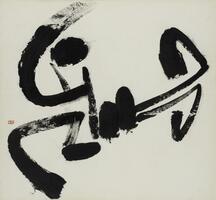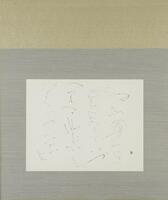152 UMMA Objects
152 UMMA Objects
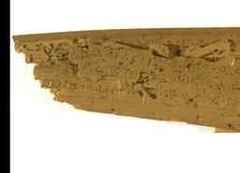
Indian (Indian (South Asian))
Sutra Writings
19th century
Gift of Lynda R. and James A. Ludy
1997/1.175

Indian (Indian (South Asian))
Palm Leaf from an Unidentified Manuscript with Devanagiri (?) script
17th century
Gift of Professor Walter M. and Nesta R. Spink
1997/2.41
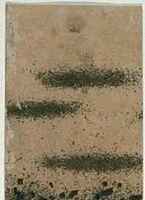
Sutejo
Calligraphy
17th century
Museum purchase made possible by the Margaret Watson Parker Art Collection Fund
1986/1.157
![In this monumental scroll, Nukina Kaioku has brushed a Chinese poem of his own composition, on the enduring theme of nature as refreshment for the spirit. Note his masterful variation of thick and thin strokes, wet and dry ink, stately and rapid movement.<br />The verses may be tentatively rendered into English as follows:<br /> Mandarin ducks enjoy the fresh water; their graceful forms glow as they pass through channels in the reeds.<br /> Pushing beyond the thickets [to the open pond], they call to one another again and again in the dawn.<br /> A crimson mist breaks through gaps in the glade, its glow warming hidden nests.<br /> Waking up with nothing to do, [I came here] to playfully row among the spring waves. In this monumental scroll, Nukina Kaioku has brushed a Chinese poem of his own composition, on the enduring theme of nature as refreshment for the spirit. Note his masterful variation of thick and thin strokes, wet and dry ink, stately and rapid movement.<br />The verses may be tentatively rendered into English as follows:<br /> Mandarin ducks enjoy the fresh water; their graceful forms glow as they pass through channels in the reeds.<br /> Pushing beyond the thickets [to the open pond], they call to one another again and again in the dawn.<br /> A crimson mist breaks through gaps in the glade, its glow warming hidden nests.<br /> Waking up with nothing to do, [I came here] to playfully row among the spring waves.](/media/W1siZiIsIjIwMjIvMDUvMjUvNDA4bXZmMmt5bF9kZWZhdWx0LmpwZyJdLFsicCIsInRodW1iIiwiMjQweDIwMCJdXQ?sha=1fda6bad9ec42b3f)
Nukina Kaioku
Calligraphy: Watching Ducks on a Spring Morning
1840 – 1863
Museum purchase made possible by the Margaret Watson Parker Art Collection Fund
1987/2.45

Korean (Korean (culture or style))
Sutra Fragment, Calligraphy in Block Script
1400 – 1899
Gift of Ellen and Richard Laing
2006/2.32

Mitsui Shinwa (Japanese (culture or style))
Calligraphy: "Bird" in seal script, plus two lines
1740 – 1783
Gift of Helmut Stern
2003/1.400
Loading…

